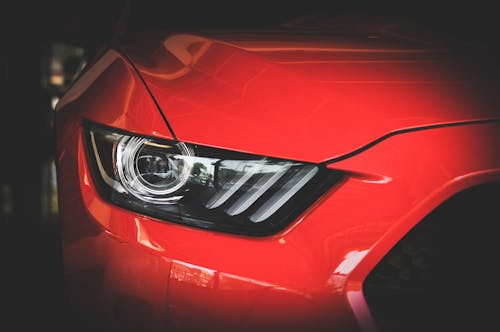Car Wrapping: Full vs. Partial - Which Option Suits Your Needs?
Introduction
Car wraps are an effective way to promote your business or make a personal statement. Not only do they add an eye-catching design to your vehicle, but they also serve as a protective layer that helps prevent damage from UV rays, road debris, and weather. But when it comes to choosing a car wrap, there are two options: full and partial.
A full car wrap covers the entire vehicle, including the roof, hood, and trunk, while a partial car wrap only covers certain areas. Each option has its own set of advantages and disadvantages, so it's important to consider your needs and goals before making a decision. In this blog post, we'll take a closer look at the pros and cons of each option to help you determine whether a full or partial car wrap is right for you.

Full Car Wrap
A full car wrap provides the most coverage and allows for the most creative freedom. With a full wrap, you can completely transform the look of your vehicle, and it's a great option if you want to make a statement or stand out from the crowd. Additionally, a full car wrap provides the most protection, as it covers the entire surface of the vehicle.
However, a full car wrap comes with a higher price tag. The cost of a full wrap can vary depending on the size and complexity of the design, but it's generally more expensive than a partial wrap. Additionally, a full car wrap can be more difficult to maintain, as it requires more frequent cleaning and can be more prone to damage.
Partial Car Wrap
A partial car wrap is a more budget-friendly option that still allows for an eye-catching design. It covers specific areas of the vehicle, such as the sides or back, and can be customized to suit your needs. A partial wrap is a good option if you want to focus on a specific message or graphic, or if you want to highlight certain features of your vehicle.
One advantage of a partial car wrap is that it's easier to maintain than a full wrap. Because it covers less surface area, it requires less frequent cleaning and is less likely to sustain damage. Additionally, a partial wrap is generally less expensive than a full wrap, making it a more accessible option for those on a tight budget.
However, a partial car wrap does have its limitations. Because it only covers certain areas, it may not provide as much protection as a full wrap. Additionally, the design options may be more limited, as certain elements may not work as well on a partial wrap.
Cost Considerations
One of the most significant factors to consider when choosing between a full or partial car wrap is cost. As we mentioned earlier, a full car wrap is generally more expensive than a partial wrap, due to the amount of material and time required to complete the job. However, the cost can vary depending on the size and complexity of the design, as well as the quality of the materials used.
When budgeting for a car wrap, it's important to consider not just the initial cost, but also the long-term value. A high-quality car wrap can last for several years, providing ongoing brand exposure and protection for your vehicle. It's also important to consider the cost of maintenance, as a full car wrap may require more frequent cleaning and repairs than a partial wrap.
Marketing Goals:
When considering whether to choose a full or partial car wrap, it's important to think about your marketing goals. If you're looking to make a big impact and get noticed on the road, a full car wrap might be the better option. With a full wrap, you have more space to showcase your brand and message, which can lead to more exposure and brand awareness.
On the other hand, if your main goal is to simply increase brand recognition and visibility, a partial wrap may be a better fit. This option allows you to strategically place your logo and message on specific areas of the vehicle, which can still generate significant exposure while being more cost-effective.
Brand Identity:
Your brand identity is a key factor to consider when choosing between a full or partial car wrap. A full wrap provides a blank canvas that allows you to completely transform the appearance of your vehicle and showcase your brand in a unique and eye-catching way. This is a great option for businesses that want to make a bold statement and stand out from their competitors.
However, if you have an established brand identity and simply want to increase visibility, a partial wrap may be a better fit. This option allows you to maintain the existing design and color scheme of your vehicle while incorporating your logo and message in a prominent and effective way.
Maintenance and Durability:
Another important factor to consider when choosing a car wrap is maintenance and durability. Full wraps tend to be more durable than partial wraps because the vinyl covers a larger surface area, protecting the paint underneath from scratches, fading, and other forms of wear and tear.
However, full wraps may also require more maintenance, as they are more prone to dirt and grime buildup. Partial wraps, on the other hand, are easier to clean and maintain, as they cover less surface area.
Conclusion:
Ultimately, the decision to choose a full or partial car wrap comes down to your marketing goals, brand identity, and maintenance needs. If you're looking to make a big impact and transform the appearance of your vehicle, a full wrap may be the better option. However, if you're focused on increasing brand recognition and visibility while maintaining your existing brand identity, a partial wrap may be the way to go.
Regardless of which option you choose, it's important to work with a reputable and experienced car wrap provider who can help you design and install a high-quality wrap that meets your needs and exceeds your expectations.

